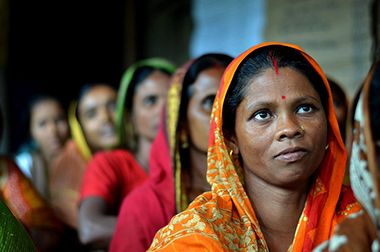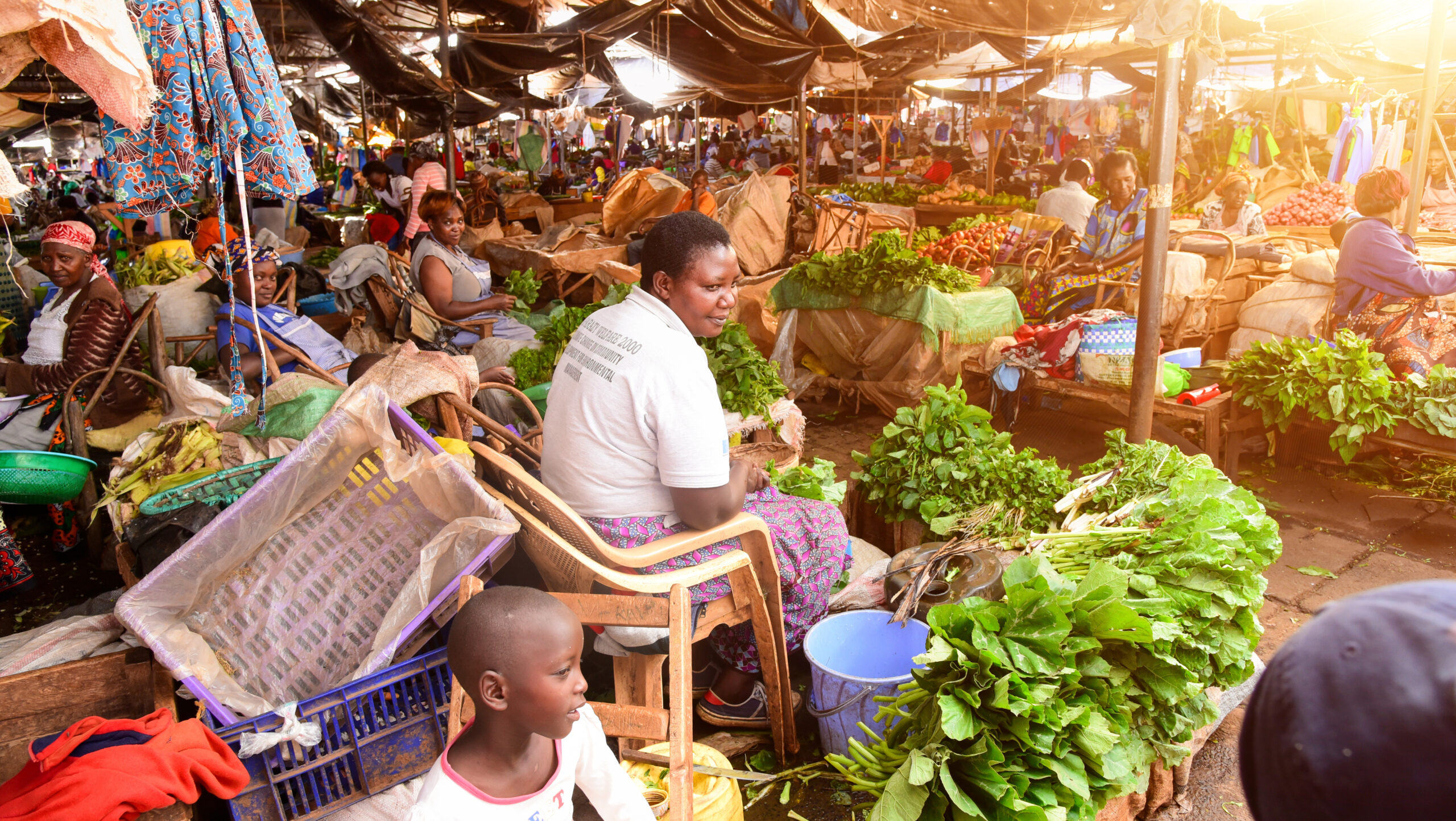The following blog by IFPRI gender experts Sophie Theis, Agnes Quisumbing, and Ruth Meinzen-Dick is the third in a four-part series leading up to the Policy Seminar on “Beijing +20 and Beyond: How Gender Research Is Changing the Landscape of Food Policy,” to be held on October 14, 2015 at IFPRI’s Washington, DC headquarters.
To commemorate Beijing+20, we are taking stock of research at IFPRI over the past 20 years that contributed to advancing gender equality by generating evidence from action, and compelling action from the evidence produced.
This blog post, part three in a four-part series on IFPRI gender research in the past 20 years, shares key takeaways from research on themes of:
- Groups and social capital
- Sustainability
- Shocks and climate change
- Nutrition and health
- Violence against women
Tune in to the final post in the blog series to read highlights from IFPRI gender research related to women’s empowerment, decision-making power, and improving gender data. Then join us on October 14th for an IFPRI policy seminar celebrating Beijing+20.
Most of the articles shared in this series are published in peer-reviewed journals, but the hyperlinks provided go to the open access versions of the publications, except where noted with an asterisk. See full list of publications (PDF 94K).
Groups and social capital:
- In Bangladesh, women benefit from groups, such as credit groups, when climatic and other shocks occur, but women participate in fewer groups, spend fewer hours in group activities and are less active in decision-making. Policymakers should seek ways to increase the active participation of women in decision-making, rather than focusing only on increasing the number of women who participate in group activities (Rakib 2015).
- Despite the importance of group-based approaches to providing services and empowerment, participation in groups is often not gender-equitable. Men and women have different motivations, constraints, and capacities for participating in collective action, which has important implications for the effectiveness of groups as well as the distribution of benefits to men and women (Pandolfelli, Meinzen-Dick, and Dohrn 2007)
Sustainability:
- Are women really “keepers of the earth”? The empirical evidence is more nuanced: sustainability requires men and women to work together to protect and enrich the natural resource base (Meinzen-Dick, Kovarik, and Quisumbing 2014).
- A behavioral experiment in rural Tanzania indicates that it is not only gender that matters for whether people contribute or take more than their share of natural resources, but the combination of gender and social status, with higher-status men taking more than their share, and low-status women being more fair (Lecoutere et al 2015)*.
- A comparative study of forest management in Kenya, Uganda, Bolivia, and Mexico found that higher proportions of females in user groups perform less well than mixed groups or male dominated ones, which may be related gender biases in technology access and dissemination, a labor constraint faced by women, and a possible limitation to women’s sanctioning authority. Mixed female and male groups offer an avenue for exploiting the strengths of women and men, while tempering their individual shortcomings (Mwangi, Meinzen-Dick and Sun 2011).
Shocks and climate change:
- Rural women and men are differentially affected by climate change. As most agricultural assets are owned by men, their asset base is more directly affected by climatic shocks, but women’s more differentiated needs for water access are also adversely affected. A wide variety of factors determines final impacts of climatic shocks on men’s and women’s assets (Quisumbing, Kumar, & Behrman 2011; Rakib & Matz 2014).
- Increasing resilience to climate change requires recognition that men and women have different perceptions of climate change and shocks, different needs, priorities, and preferences for adaptation, and different adaptive capacities. If women had the same access to information on climate-smart adaptation practices they are at least as likely as men to adopt these practices (Bernier et al 2015; Twyman et al 2014).
- Women have less access to agricultural technologies that support adaptation. In Mali, irrigation allowed men to increase their value of production almost enough to offset the negative impact of climatic shocks. Women, on the other hand, had limited access to irrigation or other farm technology, such as motorized tillers that would increase productivity (Beaman & Dillon 2014; Dillon & Gill 2014).
- Considerable work is needed to ensure that agencies implementing climate change adaptation programs on the ground have the knowledge, capacity, and incentives to successfully incorporate gender considerations into their programs. A key challenge is the lack of gender experts in government climate change adaptation programs (Ragasa et al 2014).
- Women are more risk adverse when taking decisions about agriculture, which negatively affects their adaptation to climate change. However, rural women value insuring against agricultural risk, although they have less capacity to face insurance purchasing decisions. Furthermore, evidence from West Africa shows that women may prefer different financial products to protect against other sources of risk, such as health risks associated with fertility and childcare, which men do not face (Clarke and Kumar 2015; Delavallade et al 2014).
- When women have no way to cope with income shocks, some turn to transactional sex; this may be the pathway by which droughts are increasing HIV prevalence in rural Africa (Jones, Gong, & Burke 2015).
Nutrition and health
- Why does protecting against shocks matter? Shocks, such as famines, may have different long-term impacts on women and men. Exposure to nutritional adversity in early life may have larger long-term impacts on women than men. Female survivors of the Great Chinese Famine (1959-1961) had a higher incidence of disability and illiteracy than males. The better health of male survivors reflects higher male excess mortality during the famine, but the culture of son preference explains the observed gender difference in the illiteracy rate (Mu and Zhang 2011)*.
- Evaluating the impact of El Salvador’s CCT program on a range of maternal and reproductive health outcomes, de Brauw and Peterman (2011) find robust impacts on outcomes at time of birth (skilled attendance and birth in facility), while no impacts are found on healthseeking behavior pre- and post-birth (prenatal and postnatal care).
- Using longitudinal data from China, Mexico, and Tanzania, Peterman et al (2013)* examine the relationship between pregnancy and four time-use outcomes, measured as hours spent in the past week on: (1) housework, (2) caregiving, (3) agricultural work, and (4) self-employment or nonagricultural work outside the home. The assumption that women decrease labor-intensive work during pregnancy needs revisiting.
- To examine the broader links between women’s status and nutrition, the 2009 Global Hunger Index (GHI) report examined correlations between the GHI and the 2008 Global Gender Gap Index. Higher levels of hunger are associated with lower literacy rates and access to education for women, and to health and survival inequalities between men and women. Reducing gender disparities in key areas, particularly in education and health, is thus essential to reduce levels of hunger and child malnutrition (von Grebmer et al. 2009).
Violence against women:
- There is no consensus across theories and empirical evidence on how cash transfers targeted to women affect intimate partner violence (IPV). Our results show some nuance in impact: while transfers in general lead to decreases in IPV results depend on a woman’s status as measured by her education and her education relative to her partner’s (Hidrobo et al 2013)*.
- While cash and in-kind transfers of equal size may have similar impacts on a household’s utility and consumption, differences across modalities could emerge in who controls the transfer or the likelihood of it being commandeered by one partner, and these differences could have implications on intrahousehold dynamics. We find that transfers lead to decreases in intimate partner violence and that cash is just as effective as food and vouchers at decreasing IPV (Hidrobo, Peterman, & Heise 2015).
- Peterman et al (2011) provide new estimates and analyze determinants of sexual violence in DRC that indicate sexual violence more generalized than previously thought, and suggest that future policies and programs should focus on abuse within families and eliminate the acceptance and impunity surrounding violence nationwide.
- Although international donor organizations and research institutes have become more engaged in research on sexual violence over the past decade, there is need for higher standards, funding and incentives to improve currently flawed estimates and inform programming responses (Palermo & Peterman 2011).
- Despite emerging evidence on the impacts of cash transfers on intimate partner violence (IPV) the pathways through which reductions in violence occur, remain under-explored. Qualitative and quantitative methods show that transfers decrease day-to-day conflict and stress; improve household well-being and happiness; and increase women’s decision-making, self-confidence, and movement. While these factors are likely pathways through which transfers decrease IPV, positive impacts may hinge on specific program components and circumstances that may not exist in all settings (Buller et al 2014).







